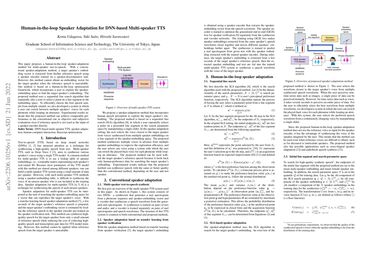Human-in-the-loop Speaker Adaptation for DNN-based Multi-speaker TTS
This paper proposes a human-in-the-loop speaker-adaptation method for multi-speaker text-to-speech. With a conventional speaker-adaptation method, a target speaker's embedding vector is extracted from his/her reference speech using a speaker encoder trained on a speaker-discriminative task. However, this method cannot obtain an embedding vector for the target speaker when the reference speech is unavailable. Our method is based on a human-in-the-loop optimization framework, which incorporates a user to explore the speaker-embedding space to find the target speaker's embedding. The proposed method uses a sequential line search algorithm that repeatedly asks a user to select a point on a line segment in the embedding space. To efficiently choose the best speech sample from multiple stimuli, we also developed a system in which a user can switch between multiple speakers' voices for each phoneme while looping an utterance. Experimental results indicate that the proposed method can achieve comparable performance to the conventional one in objective and subjective evaluations even if reference speech is not used as the input of a speaker encoder directly.
PDF Abstract